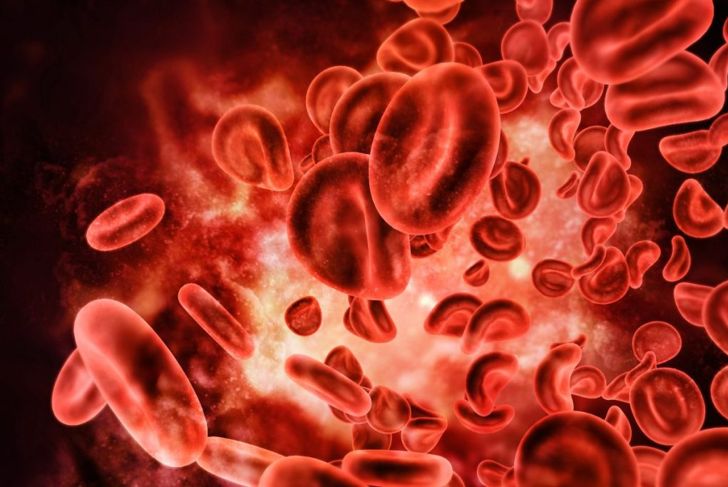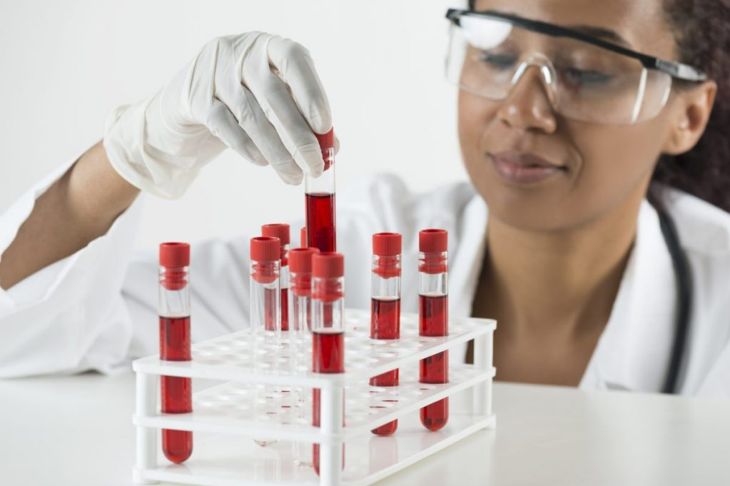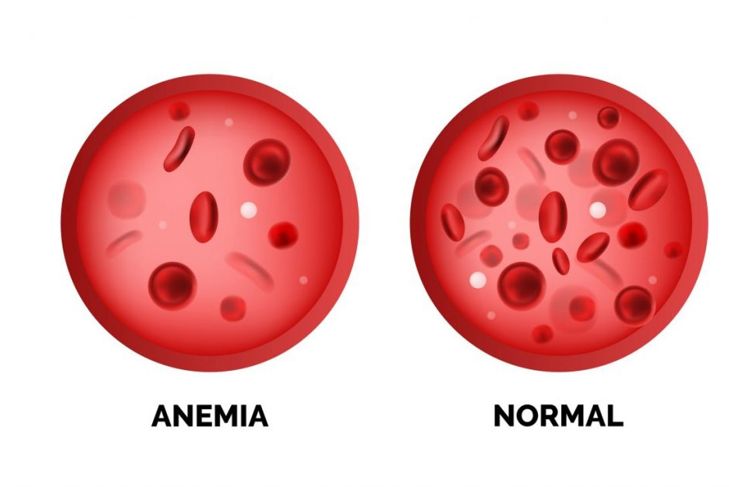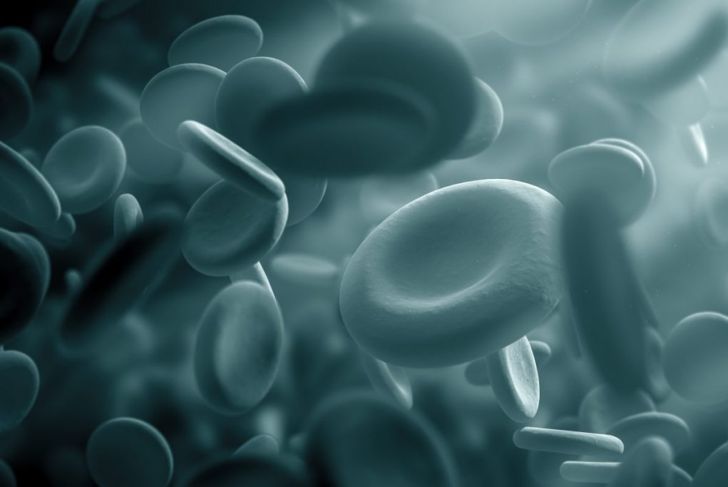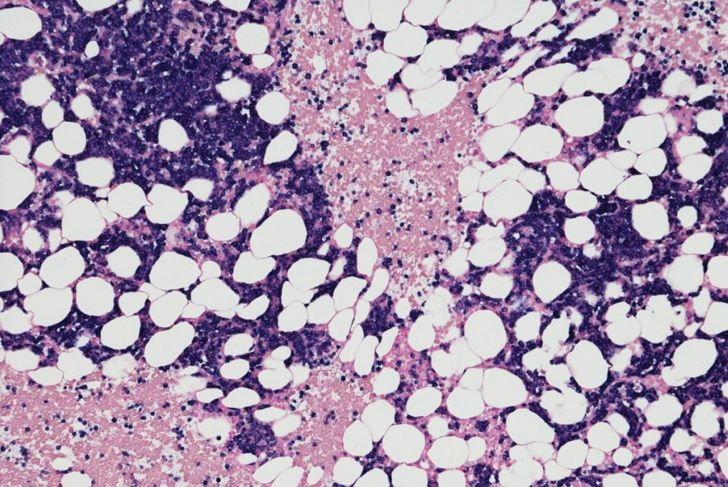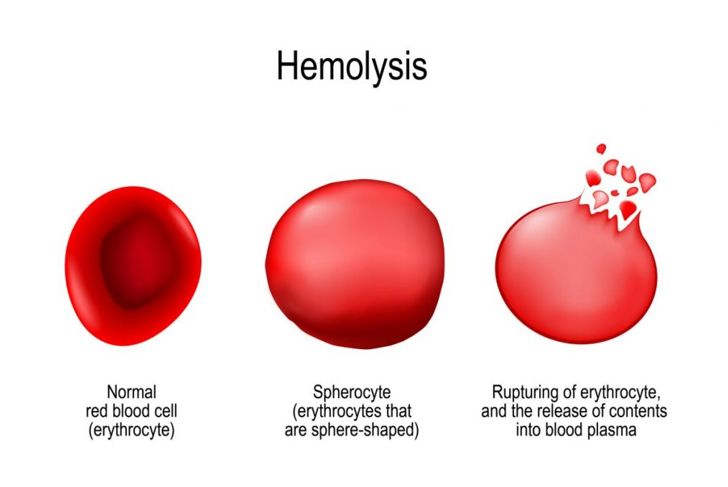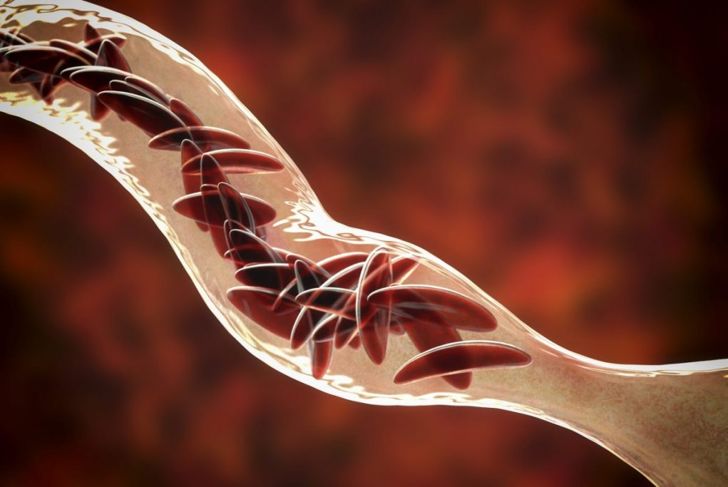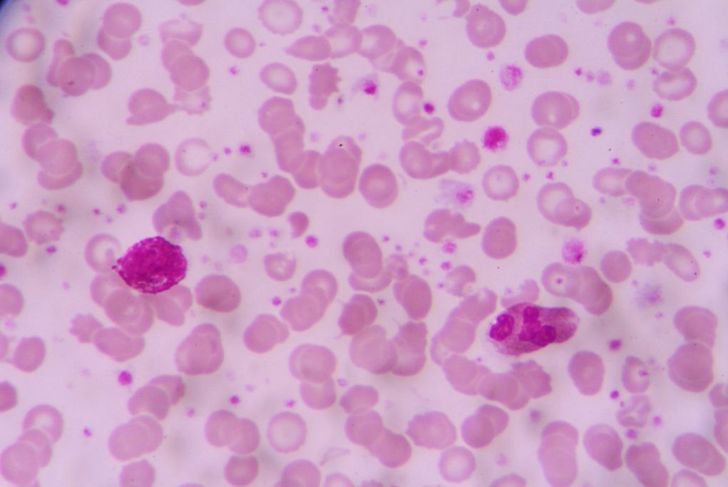Hemoglobin is a protein in red blood cells that contains four chains, each with one heme group. The heme group contains iron that binds with oxygen, which enters the body through the lungs. Hemoglobin within red blood cells picks up the oxygen, which is supplied to cells and tissues as the red blood cells travel throughout the body. There are billions of cells in the human body, and each cell requires oxygen to function. Hemoglobin levels inform on overall health, and abnormal levels can indicate illness.
Measuring Hemoglobin Levels
Blood tests can measure hemoglobin levels. The abbreviation for hemoglobin is Hb, and the measurement is usually recorded as grams of hemoglobin per deciliter of blood, or g/dL. Common tests include complete blood count, or CBC, and hematocrit tests. The latter measures the volume of red blood cells compared to total blood volume. It is also referred to as HCT, Crit, PCV for packed cell volume, or an “H and H” for hemoglobin and hematocrit. The average hemoglobin range is 14-18 g/dl for an average man and 12-16 g/dl for an adult woman.
High Hemoglobin Levels
The body produces more red blood cells, and thus more hemoglobin, in response to insufficient oxygen. High hemoglobin levels can be a result of dehydration, smoking, or living at high altitudes. They can also indicate a rare blood disease, polycythemia, a condition that causes the body to produce too many red blood cells. Excessive red blood cells make blood too thick and increase the risk of heart attacks, strokes, and blood clots. Polycythemia can be fatal without treatment.
Low Hemoglobin Levels
Low hemoglobin levels often indicate some type of anemia or insufficient red blood cells and low oxygen in the body. The threshold for an anemia diagnosis is fewer than 13.5 g/dL of hemoglobin for men and fewer than 12 g/dL for women. The appropriate levels for children vary depending on age.
Symptoms of Low Hemoglobin
Symptoms of low hemoglobin or anemia are the same regardless of the cause or type of anemia. The main symptoms include shortness of breath, fast or irregular heartbeat, and chest pain. Some people may experience fatigue, headaches, coldness in the extremities, weakness, pale or sallow skin, dizziness, and “pounding” in the ears.
Iron-Deficiency Anemia
The most common type of anemia is iron-deficiency anemia, which occurs when there isn’t enough iron in the body to make sufficient amounts of hemoglobin. This type of anemia develops because of blood loss or poor iron absorption. Women are at higher risk of iron-deficiency anemia due to blood loss during menstruation or pregnancy and childbirth. People over the age of 65 are the most likely demographic to consume too few iron-rich foods, and are therefore also at increased risk.
Vitamin-Deficiency and Aplastic Anemia
Insufficient nutrient consumption causes vitamin-deficiency anemia. This type of anemia causes irregularly-shaped and rigid red blood cells that cannot carry oxygen efficiently. It is often related to low levels of vitamin B12 and folic acid. Aplastic anemia occurs when the immune system attacks hematopoietic stem cells in bone marrow. These cells produce red blood cells and are also essential for the production of white blood cells and platelets. Aplastic anemia results in a deficiency of all three blood cell types.
Chronic Kidney Disease
Kidney disease is associated with anemia and low hemoglobin. Damaged kidneys do not make enough erythropoietin or EPO, a hormone that stimulates the production of red blood cells in bone marrow. Low hemoglobin levels can also develop due to blood loss through dialysis. People in the later stages of kidney failure or those on dialysis have a restricted diet. Unless carefully managed, the restrictions contribute to deficiencies in many nutrients the body needs to function.
G6PD Deficiency
G6PD deficiency is a genetic disorder that causes a lack of the enzyme glucose-6-phosphate dehydrogenase, or G6PD. The enzyme increases the efficiency of red blood cells in picking up and transporting oxygen. It also protects blood cells from several harmful substances. Insufficient or defective G6PD leads to excessive hemolysis or the breakdown of red blood cells. G6PD deficiency is one cause of hemolytic anemia.
Thalassemia
Thalassemia is a genetic blood disorder that causes the body to make abnormally formed hemoglobin. Two proteins, alpha globin and beta globin, form hemoglobin, and there are two types of thalassemia: alpha thalassemia and beta thalassemia, which adversely impact each of the proteins, respectively. The abnormally formed protein in hemoglobin causes the body to destroy a large number of red blood cells, which leads to hemolytic anemia.
COPD and High Hemoglobin Levels
COPD and emphysema are associated with high hemoglobin levels. Increased hemoglobin and red blood cell production is the body’s response to chronically low oxygen levels. People with COPD often have very low oxygen concentrations in their blood. The surge in red blood cell production corresponds to declining oxygen. A 2016 study in the International Journal of Chronic Obstructive Pulmonary Disease found hemoglobin levels surged then dropped back to normal or below normal values in the later stages of COPD. The study also found that low hemoglobin levels may indicate poor prognosis related to COPD, but the study is not conclusive and research is ongoing.

 Home
Home Health
Health Diet & Nutrition
Diet & Nutrition Living Well
Living Well More
More